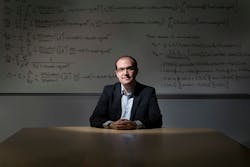Finding Safe Spots for Space Satellites
Finding safe locations for the large number of low-Earth-orbit satellites (LEOS) predicted for launch in the next seven years has become a goal for Purdue University’s College of Engineering. About 10X the number of satellites currently in orbit are expected to be launched by 2030, boosting concerns of collisions for these high-speed space vehicles that can travel faster than 4 miles/s.
David Arnas, an assistant professor of aeronautics and astronautics at Purdue and his graduate students are exploring ways to safely park LEOS and geosynchronous satellites safely in orbit, even with the numbers of vehicles increasing so dramatically over the next decade.
Arnas said, “With this density of satellites, something is going to fail and cause a collision. It is just a matter of probability. Satellite constellations are getting so big and numerous that it’s becoming impossible to accurately track them all and ensure their long-term safety even through computational means.”
But by exploring novel orbital patterns, Arnas (see image above) and his graduate students are hoping to find how modified orbits could create safer locations for orbiting satellites. One of the areas being investigated for a rapid growth of “parked” satellites is the cislunar region between the Earth and the moon.
Arnas and his satellite research teams hope to make outer space more equitable and reduce the likelihood of outer space becoming too cluttered with satellites for future space exploration missions to be conducted safely. He noted, “Space is a common resource of humanity, just like water and air. Even if it seems very vast, it is still limited. It is our responsibility to ensure that future generations will also have fair access to it.”
Included in their research are ways to organize large satellite constellations to safely deal with space debris when the satellites are no longer operable.
About the Author
Jack Browne
Technical Contributor
Jack Browne, Technical Contributor, has worked in technical publishing for over 30 years. He managed the content and production of three technical journals while at the American Institute of Physics, including Medical Physics and the Journal of Vacuum Science & Technology. He has been a Publisher and Editor for Penton Media, started the firm’s Wireless Symposium & Exhibition trade show in 1993, and currently serves as Technical Contributor for that company's Microwaves & RF magazine. Browne, who holds a BS in Mathematics from City College of New York and BA degrees in English and Philosophy from Fordham University, is a member of the IEEE.
